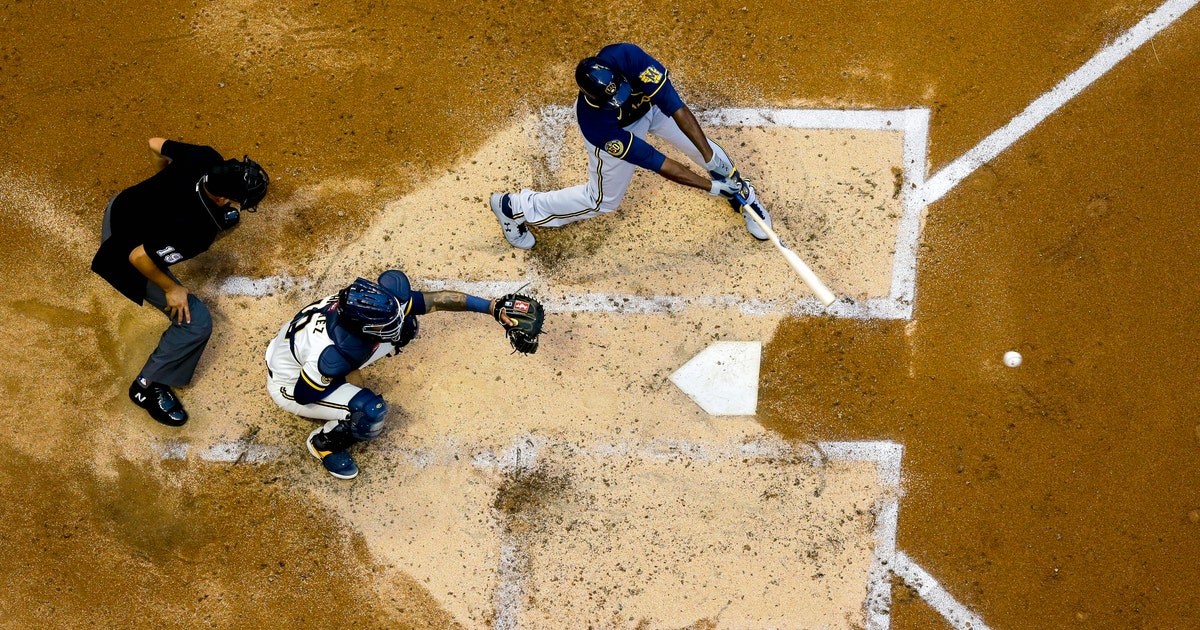Social distancing on diamond isn’t too tough — except around home plate


Just like with his strong arm and limber legs, Joe Girardi made good use of his mouth over 15 seasons as a big league catcher. So much so that slugger Chili Davis once told him to shut it.
“He was like, ‘You’re bothering me, I’m trying to hit,’” recalled Girardi, now manager of the Philadelphia Phillies. “I said, ‘Well, I’m trying to bother you, Chili.’”
Girardi doesn’t think that kind of chatter will happen as much this season amid the coronavirus pandemic.
There’s some concern that home plate could become a hot spot for transmission as baseball attempts to play a shortened 60-game season starting Thursday.
Social distancing elsewhere around the diamond is fairly easy. But with the batter, catcher and umpire gathered within a few feet of each other around home plate, it might not be possible for all parties to follow government guidance to avoid 10 to 15 minutes of close exposure to others.
“It’s been a little weird. Just from being back there for so long, you get used to having people around,” Arizona Diamondbacks catcher Carson Kelly said. “But now you get some second thoughts. ‘Oh, wait, should I be this close to this guy?’ … We’ve got a job to do, but at the same time we need to be safe.”
Like with so much in everyday life during the pandemic, the interactions at home — whether cordial exchanges or distracting chatter — will feel far from normal for the trio around that 17-inch wide plate.
“This is something everybody’s talking about, everybody’s trying to figure out,” Texas Rangers catcher Robinson Chirinos said. “But in the end, hopefully, we can do our part and be safe at the plate, because of having those three guys right there so close.”
Chirinos plans to wear a face covering under his catcher’s mask, but knows that it will have “to be on and off just because I still need to be vocal out there being a catcher,” and make sure pitchers and fielders can hear and understand what he is saying.
Just by the nature of their responsibility to calls balls and strikes, umpires are directly behind catchers and peering over catchers’ shoulders. Within that close contact it’s not uncommon — at least not in the past — for umpires to put their hands on crouching catchers. There is also the back-and-forth talk between them at times about those calls, though that is rarely face-to-face.
Some plate umpires are expected to wear their own face coverings. In addition, umpires have been given plastic shields to go over the bottom of their masks. That could reduce contact and droplets, but there might be some concern about those shields fogging up.
About 10 Major League Baseball umpires have opted out of working games this season because of concerns about the coronavirus.
Like players, managers, coaches and other essential staff members, umpires are being tested regularly for the coronavirus.
Kurt Suzuki, catcher for the World Series champion Washington Nationals, said it would be “really tough” for him to wear a medical mask when behind the plate, though he would like to do that.
“But we have good protocols, good testing. Everybody who’s here shows up negative, so that’s kind of where we’re at right now,” Suzuki said. “We’re all in this together. We have to follow the rules if we want to make this work.”
Even with all the testing, precautions and protocols, there will still be an uneasy feeling for some around home plate.
“In the big picture, I’m worried because if one gets it, everyone gets it. That’s how the virus is. That’s what gets me scared about it,” Milwaukee Brewers catcher Omar Narvaez said. “Everyone knows the healthiest team is going to win. We’re all going to try and help each other stay healthy. Everybody knows it’s a dangerous position we’re in right now, but I’m trying not to think about it.″
The New York Yankees have two players who say they’ll wear masks at least some of the time around home plate — outfielder Clint Frazier and backup catcher Kyle Higashioka.
Frazier was among the first MLB players to declare he’d wear a face covering full-time, and he’s been experimenting with different models to see what feels best in the batter’s box.
“I’m just trying to show that it’s easy to do and it’s the right thing to do,” Frazier said. “If it helps a little bit, it’s not hard to do, so I’m going to try to do it as much as I can. Hopefully, someone sees it and maybe they do it, too.”
Yankees manager Aaron Boone supports players wearing masks if they’re comfortable but isn’t mandating it. Neither is MLB — players must use face coverings elsewhere in the ballpark, but not during on-field activities.
Higashioka has settled on a lightweight gaiter covering that fits comfortably under his catcher’s mask. He won’t wear it while hitting because it restricts his ability to turn his head, but said “for catching, there’s nothing that really bugs me about it.”
“I’m kind of in close vicinity with a couple other people,” he said. “Might as well just throw the face covering on just in case. Not sure if it’ll help much, but anything works.”






